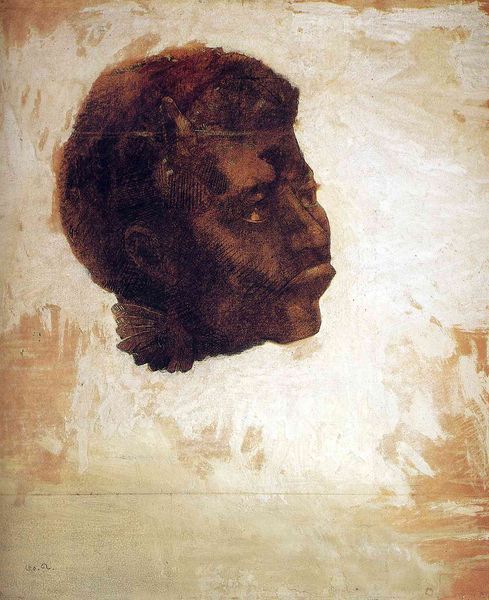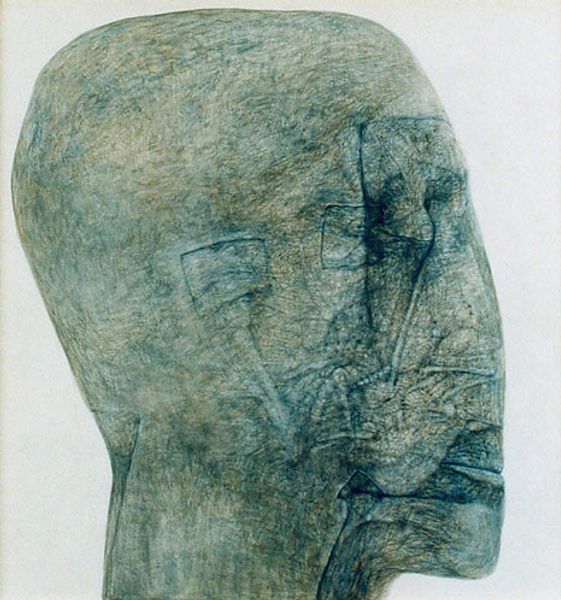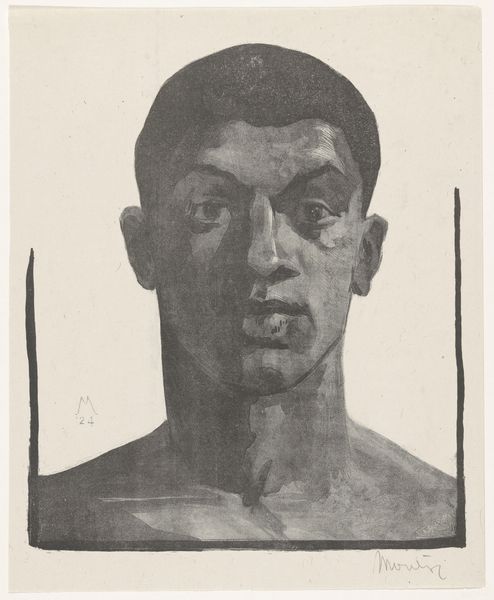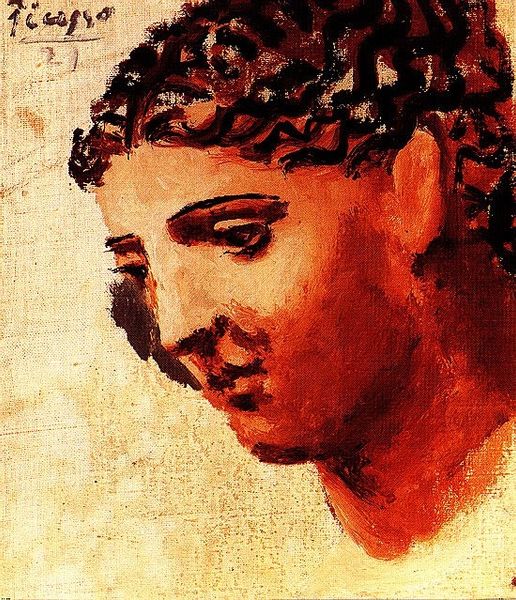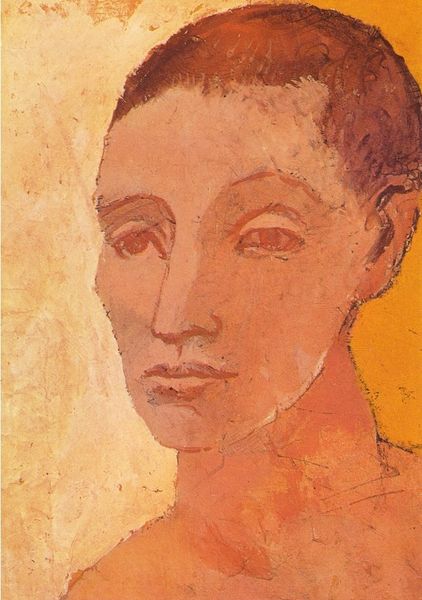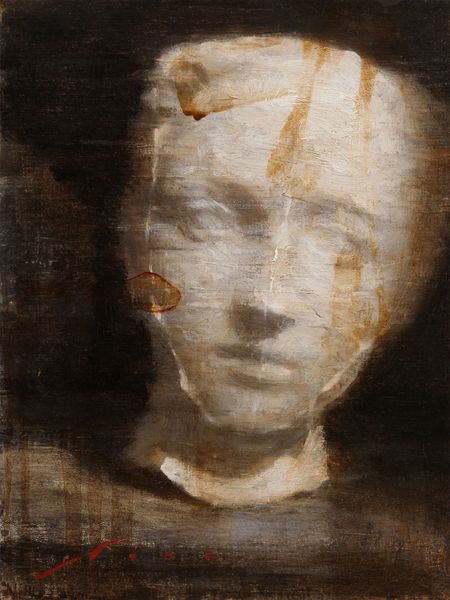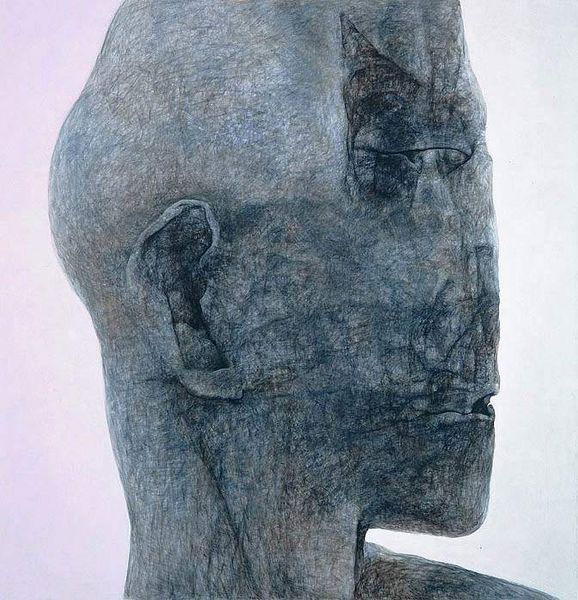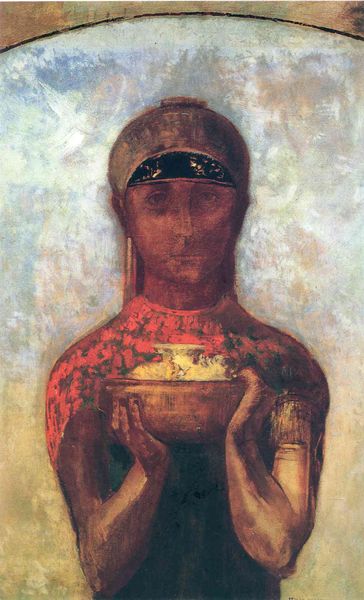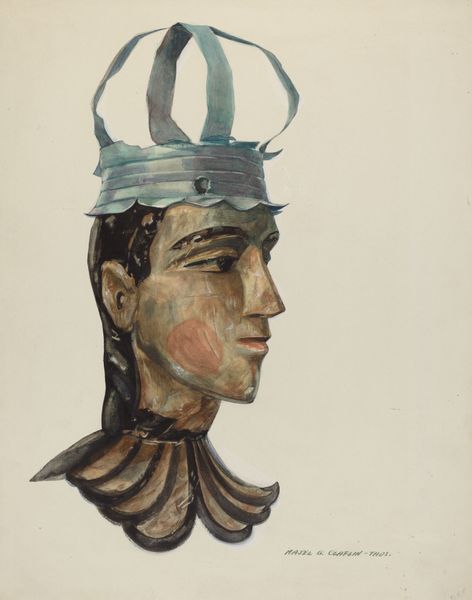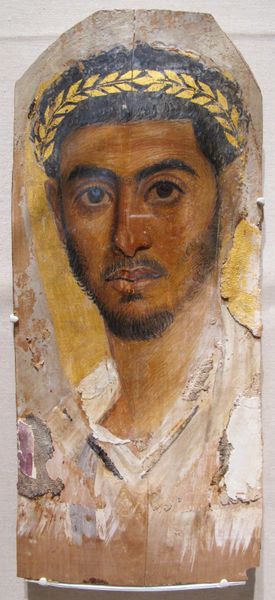
oil-paint
portrait
head
face
oil-paint
oil painting
nose
forehead
portrait art
modernism
Copyright: Public domain US
Editor: This is "Meu Primeiro Trabalho," or "My First Work," painted in 1921 by Candido Portinari, using oil paints. I’m really struck by how the artist captured light and shadow, especially on the subject’s face. How would you interpret Portinari's composition in this work? Curator: The formal arrangement of the planes and tonalities offers a study in contrasts, not merely of light but of artistic confidence versus hesitant execution. Observe the somewhat muddied blending of pigments, particularly in the background, set against the deliberate, almost sculptural rendering of the subject’s features. Do you see this interplay? Editor: Yes, I think so! The textures feel different somehow – the face more intentional, the background almost secondary. Curator: Precisely. This leads us to examine the function of color. Consider the green turban: it is not realistically hued, but serves rather to guide the eye and to introduce a compositional tension with the russet tones of the skin. It suggests an interest in flattening pictorial space, defying traditional Renaissance perspective. Editor: It’s almost like the color exists for its own sake, not just to represent the object. Curator: Correct. Now, note the somewhat ambiguous line between the portrait and pure abstraction. Portinari seems to investigate not only likeness, but also the very nature of painting itself. He asks: What is the relationship between form, color, and representation? What expressive means are available to painting? Editor: It is intriguing to see an artist working through these tensions so explicitly. Curator: Indeed. The perceived "roughness" is not deficiency but perhaps a conscious aesthetic choice. These qualities invite us to delve beyond superficial interpretation and to question our assumptions regarding aesthetic convention and the artist's aims. Editor: That’s given me a lot to think about! Thanks for sharing your insights.
Comments
No comments
Be the first to comment and join the conversation on the ultimate creative platform.
